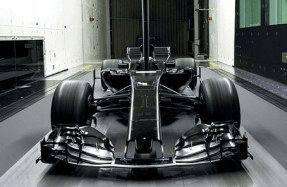New old Stock

After years in the making, countless hours in the computer design phase – that was further elongated by Covid – and more than 1100 hours in the wind tunnel, NASCAR has finally unveiled its Next Gen regulations that will debut at Daytona, 2022. At a ceremony in North Carolina early in May its three competing manufacturers, Toyota, Ford and Chevrolet, unveiled their contenders for the Cup Series under the moniker of ‘Stock reborn’.
The Next Gen cars are a complete departure from the Gen-6 cars they replace, with new technology in safety, suspension set-up, body panel materials and aerodynamics, as well as a focus on aesthetics and a reduction in cost, in order to make the category more attractive to a potential fourth manufacturer.
There is also thought given to the future powertrain for the category, with the possibility of hybrid technology being introduced into the new platform as a further carrot on the end of the stick to any manufacturer considering joining in the near future.
Some of the more radical and noticeable changes include the manufacturers styling their own cars, meaning a smaller greenhouse and a shorter rear deck, while aero has also changed considerably, particularly under the floor and in the rear diffuser to improve the racing and reduce the risk of a blow-over.
Product relevance
The key point NASCAR was hoping to make with the design of the aerodynamics was that it has put the ‘Stock’ back into Stock Car racing, thereby making the product more relevant to the OEM production line.
Less noticeable, but with more impact in the competition, will be the reduction in downforce, which will make the cars harder to
You’re reading a preview, subscribe to read more.
Start your free 30 days





